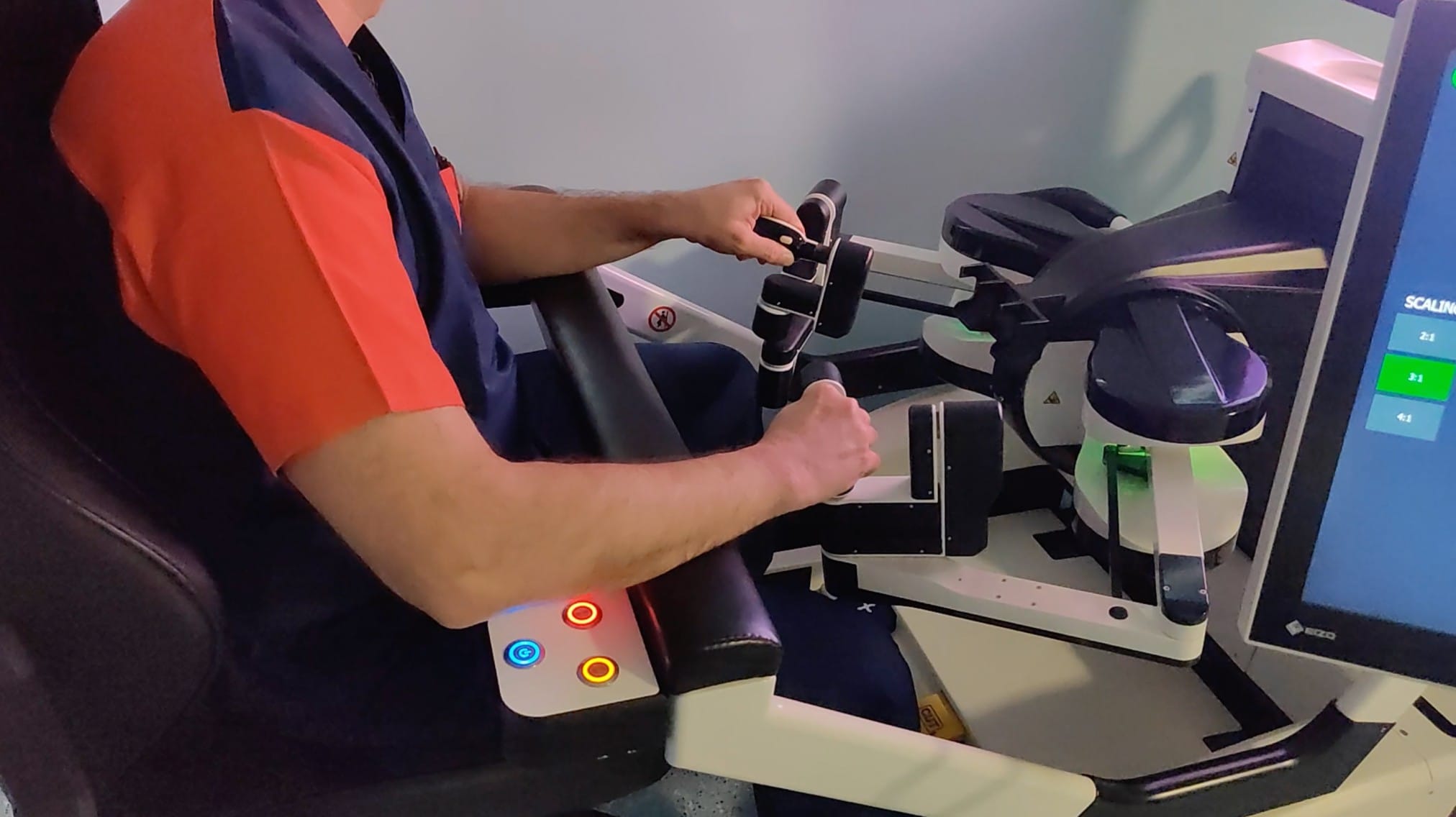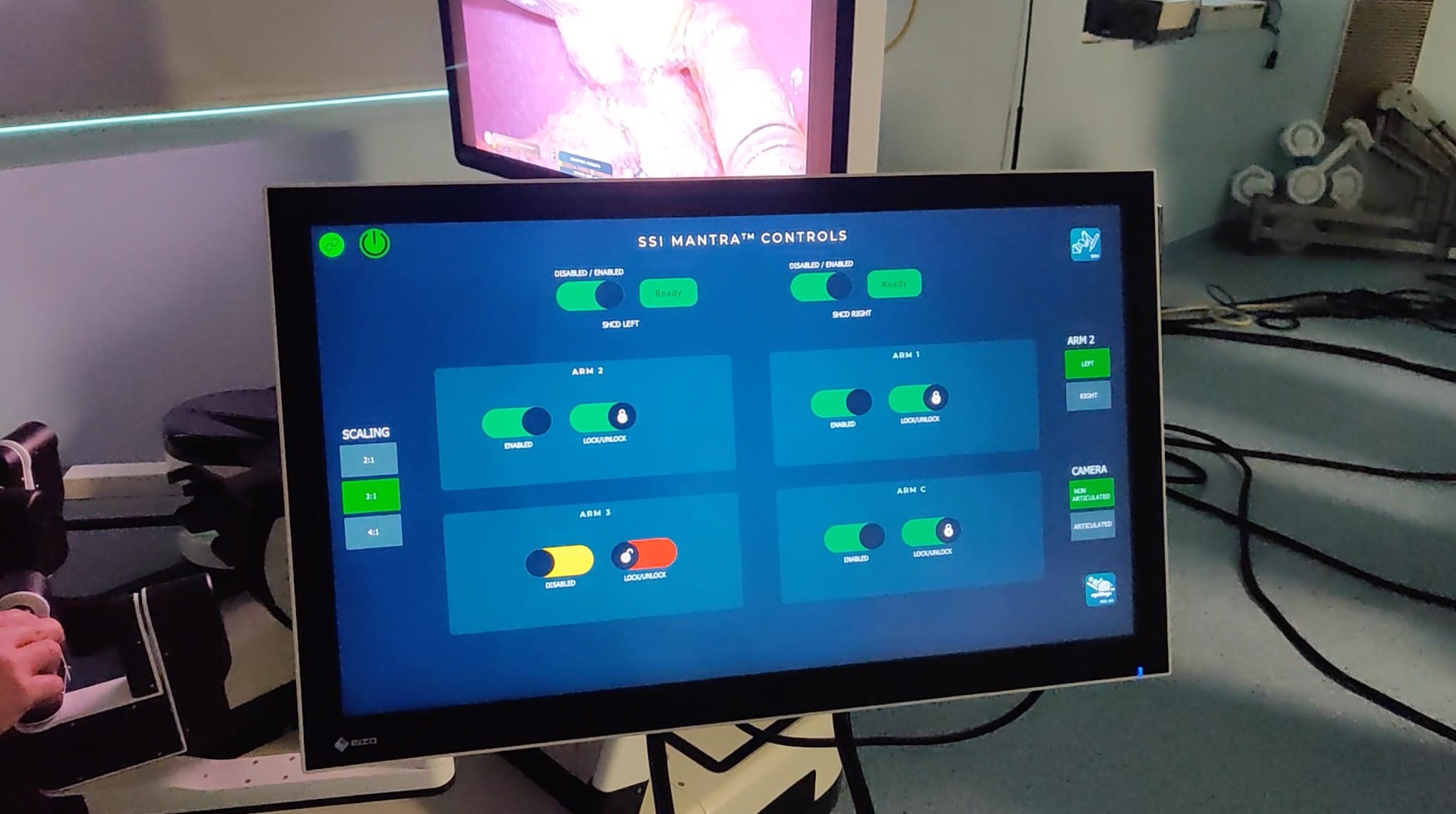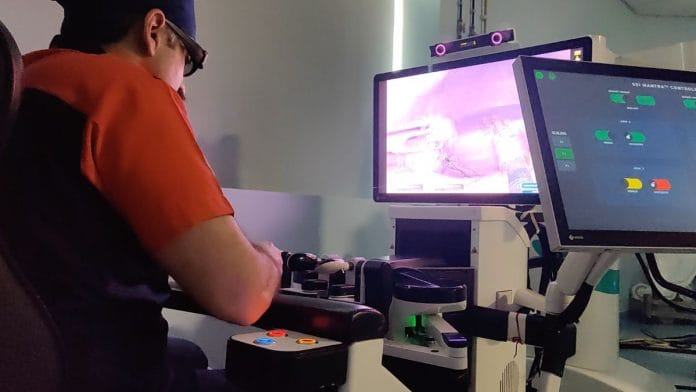Moradabad/New Delhi: Dr Magan Mehrotra, a minimal access bariatric surgeon in UP’s Moradabad, about 180 km from the national capital, had been listening to his surgeon friends abroad rave about the benefits of robotic-assisted surgeries (RAS) for years until he found the opportunity to dive into the space himself.
Higher precision, lesser pain to patients, lower blood loss and faster recovery have been among the key reasons that surgeons across the world have rapidly switched to RAS—a surgical procedure that uses a robotic device under the guidance of a trained surgeon. But the exorbitant cost of the surgical robots, estimated at around Rs 15-20 crore, held Mehrotra back from realising his ambition of adopting the cutting-edge technology for his work.
“I work in a Tier 2 town, where the paying capacity of patients is not as high as those in the metropolitan cities. So, going for an expensive technology was not a feasible option,” he says.
Last year, however, he came across a proposal to install a made-in-India surgical robot at one-fourth the price of other imported devices available in the country. The surgeon did not have to give a second thought.
Since July 2023, the robot installed at Apex Hospital, a 110-bed facility co-founded by Mehrotra, has been used to perform 300 surgeries across specialities, like general surgery, gynaecology and urology.
Even though RAS comprises just 10 percent of the total surgeries that he carries out every month, Mehrotra says that he is surprised at the tremendous response from patients that the technology has received. “The demand is growing quickly because of the many advantages it offers,” he tells ThePrint.
Indian surgeons have been rather overwhelmed with the dramatic rise in the demand for the advanced technology, which first arrived in the country in 2002, but has only leapfrogged over the last few years. While RAS is gaining popularity in mega cities, its adoption is rapidly taking flight in Tier 1 and 2 cities, too.
Healthcare industry insiders say that between 2002 and 2019, hospitals in the country saw installation of just about 50 robotic systems. But this number has grown to over 300 now and is rising every month.
Leading companies offering the surgical robots in India include US-based Intuitive Surgical, American-Irish medical device company Medtronic, British devicemaker CRM Surgical, and SS Innovations (SSI), an Indian company which makes indigenous surgical robots.
Also Read: Rotavirus vaccine has curbed deaths in India by a third, deterred antibiotic misuse, finds US study
What sets RAS apart
Laparoscopic surgery, also known as minimally invasive surgery or keyhole surgery, is a surgical procedure that uses small incisions to examine or treat organs in the abdomen or pelvis, and has been employed by surgeons in the country since the 1990s. However, it has several limitations, such as two-dimensional views, decreased hand-eye coordination, compromised dexterity and limited access to surgical sites in the body.
RAS, on the other hand, employs a video-game-like console, usually within the operation theatre, where the surgeon sits with special eyeglasses to look at a monitor showing magnified 3D layouts and regulates the surgical procedure by moving his arms and fingers.

Robotic arms at the operating table make small incisions in the required spots in the patient’s body and thin tube-like tools called ports are placed at the cuts for inserting the surgical equipment. During the procedure, an assistant surgeon remains by the operation table to monitor the procedure and change any equipment if needed.
The enhanced magnification and dexterity of robotic surgery, according to surgeons, enables them to easily perform the procedure in areas of the body, which are difficult to reach. Simultaneously, for patients, it translates into less pain, minimal blood loss and quick recovery.
“The set-up looks somewhat like a scene from a sci-fi movie, and the outcomes are so good that a large number of patients are now realising its benefits,” says a senior robotic surgeon associated with the All India Institute of Medical Sciences (AIIMS), New Delhi.
According to Dr Vivek Bindal, chairman of India’s Clinical Robotic Surgery Association—a network of over 200 such surgeons—robots let surgeons perform with such precision that is neither possible through open surgery nor laparoscopy, though a lot depends on the surgeons’ skills.
The Association estimates that nearly 60,000 robotic-assisted surgeries are now being performed by over 1,500 surgeons in India every year across specialities, such as general surgery, oncology, urology, nephrology, pulmonology, cardiology, gynaecology and joint surgeries, among others.
“Though these numbers are small, considering the millions of surgeries performed in the country every year, we are still seeing a rapid rise in the demand for the surgeries. Doctors are trying to learn the sophisticated skills required to learn the new mode,” Bindal says.
Among general surgeries, for instance, the technology is now being used widely for conditions, like hernia, where there is weakness in the tissue or muscle and the organ inside pushes through it.
A hernia can occur in various places in the body, such as the abdomen, the groin, diaphragm or the site of any previous incision due to surgery. Due to minimal scarring, minimal pain, greater precision and safety, robotic surgery has become one of the most preferred surgical options for the condition, Bindal notes.
But the adoption of the technology is not limited to simple surgeries alone. It is also used for complex surgeries, such as those related to cancers and heart diseases.

Surgeons’ reluctance
Dr Rama Joshi, a surgical oncologist with Fortis Memorial Research Institute, who specialises in gynaecological cancers, recalls that when she was under training, she would often hear her professors wonder about the need to “peep through a hole” if there was an option to “go through the door”.
“Many times, there is reluctance on the part of the surgeons to learn a new skill, but considering the benefits it brings to the patient, I feel surgeons need to adopt this technology for the patients’ sake,” she says.
According to Dr Somashekhar S.P., a robotic onco-surgeon and chairman of the medical advisory board at Aster DM Healthcare, it takes months of training on every specific robotic system—Da Vinci by Intuitive, Hugo by Medtronic, Versius by CMR and Mantra by SSI—before a surgeon can start performing robotic surgeries.
“Even then, it may require a mentor to be present for the first few times. But the effort is totally worth it, considering the profound improvement in the surgical outcomes,” he tells ThePrint.
Dr Rooma Sinha, a senior obstetrician and gynaecologist with Apollo Hospitals in Hyderabad, was among the first doctors in the country to adopt and offer the technology to her patients in the early 2000s.
“Many times, the tool is reserved for patients in very advanced stages of complicated illnesses,” she points out. “But when RAS can immensely benefit patients in procedures, like endometriosis, why should it not be available to all patients who need surgery for the condition?”
Also Read: 34 more fixed dose combination drugs likely to be banned, apex regulator says after big crackdown
Taking wing in smaller towns
When 43-year-old businessman Yudhveer Singh consulted Dr Mehrotra regarding gallstones—hard deposits that form inside the gall bladder—and was advised to go for the removal of the organ, he was asked to choose between laparoscopic surgery and RAS.
“I read about both and realised that RAS allows for small incisions at sites that lead to lesser pain and discomfort to patients and decided to go for it,” Singh tells ThePrint.
At the Aadhar Health Institute in Haryana’s Hisar, Dr Harish Sharma, a consultant oncosurgeon, says within six months of installing a robotic system, the hospital has carried out over 100 such surgeries.
“We were a bit worried when we started out, but the response from the patients has exceeded our expectations. Now, we have patients coming in from villages asking for robotic surgery,” says Sharma.
According to a statement by Intuitive Surgical, while surgeons in bigger cities were quick to adopt RAS, the company is now seeing adoption in smaller cities, across all regions and types of health institutions, including private hospitals, teaching institutes, government hospitals, large hospital networks and standalone hospitals.
Of the nearly 300 surgical robots currently installed in India, 165 have been manufactured by Intuitive with its systems also in use at AIIMS, Safdarjung and Dr Ram Manohar Lohia hospitals in Delhi, and Puducherry’s Jawaharlal Institute of Postgraduate Medical Education and Research, among others.
However, the latest version of Intuitive’s Da Vinci—the Da Vinci 5—is yet to arrive in India.
Indian firm SSI, whose surgical system was developed with support from NITI Aayog’s Atal Innovation Centre, says that most of the demands for its systems come from outside the metro cities.
The cost barrier
According to Dr Somshekhar, the turning point for robotic surgeries in India came in 2019, when the Insurance Regulatory and Development Authority (IRDAI) ruled that all health insurance companies are required to cover robotic surgeries as modern treatments.
Yet, cost has been a major factor for the limited reach of robotic surgeries, experts say, highlighting that RAS can raise the cost of surgery from 10-100 percent depending on the type of procedure and the facility offering it.
Another issue, Dr Bindal says, has been that not all insurance packages provide coverage for robotic surgeries yet, and given the limited expanse of health insurance in the country, cash-paying patients opt for methods that best suit their pockets, even if they come at the cost of comfort.
Dr Sudhir Srivastava, a US-based cardiac robotic surgeon who founded SSI, says that this was why he thought of developing a made-in-India surgical robot. “Our system was designed to challenge the status quo in the medical field, ensuring that patients from all walks of life could benefit from the precision and efficiency of robotic surgery, irrespective of their economic status,” he tells ThePrint.
Srivastava points out that the Indian RAS market is experiencing rapid expansion, with more cost-effective solutions making their way into the public health sector.
“According to a recent report by Grand View Research, the Indian surgical robots’ market was valued at approximately $200 million in 2022 and is projected to grow at a compound annual growth rate (CAGR) of around 12 percent from 2023 to 2030,” he notes.
The latest version of the surgical robot developed by his firm was used in June this year to perform India’s first telesurgery, where the patient was in an operation theatre at Gurugram’s World Laparoscopy Hospital with the surgeon performing RAS from the SSI headquarters in the city, five km away from the hospital.
(Edited by Mannat Chugh)






